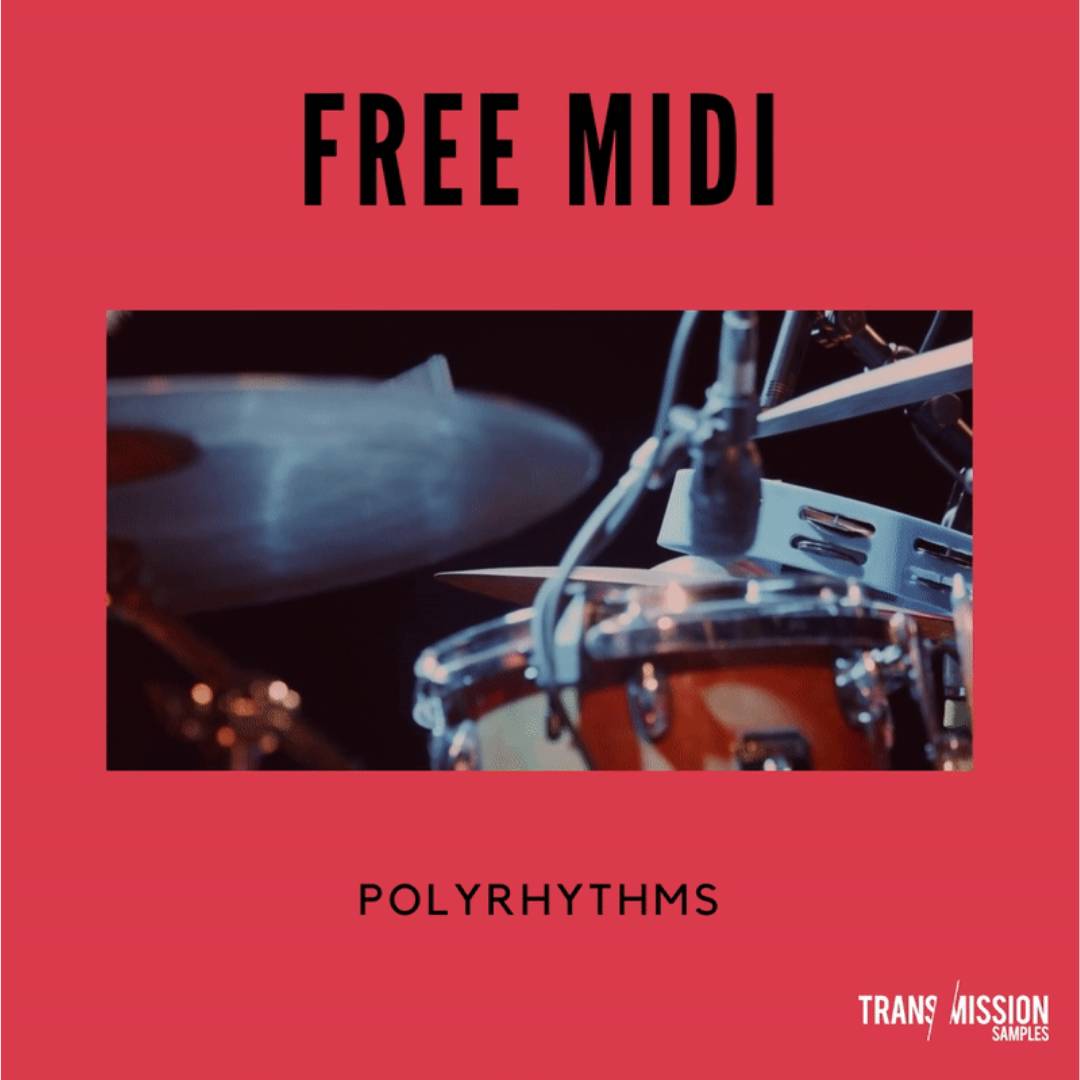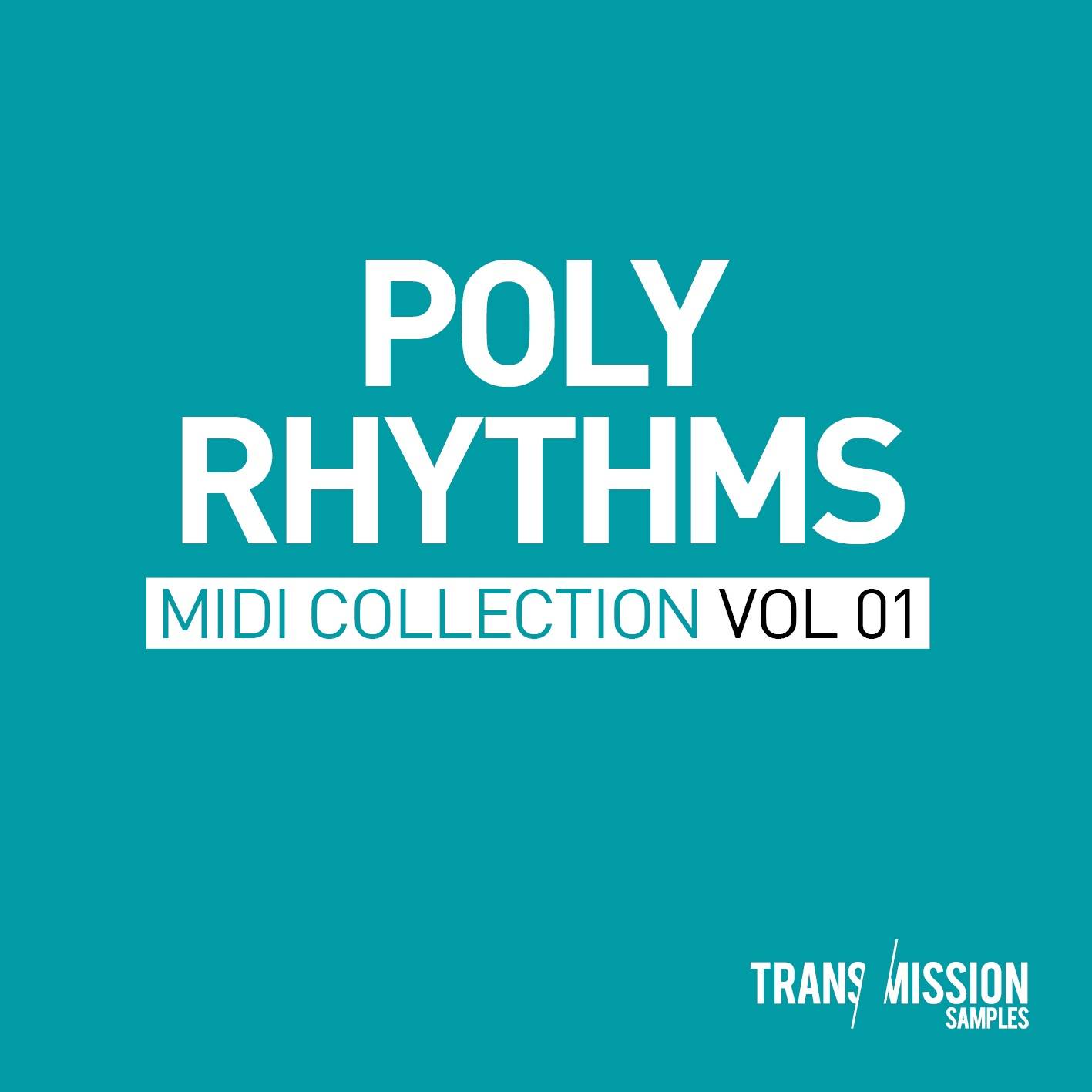These High-Quality Free MIDI Polyrhythmic Drums and Melodic sequences can be instantly downloaded by login in, or simply signing up.
Incorporate Polyrhythm into your production with our free polyrhythm MIDI tool. Learn to use Polyrhythm and Polymeter techniques in your production. The files included are designed for drums, chord progressions, and melodies using a number of rhythmic techniques in different time signatures.
All the Midi compositions and loops are 100% royalty-free
The free MIDI Pack Includes
- Drums Loops, Bass Loops, Lead, chord, and melodic loops.
- Contains 14 Midi files
Log in or Create an account to download free product
Polyrhythm Midi pack
Defining a Polymeter
Put simply, Poly means more than one, so a polymeter is multiple meters, or time signatures, playing together. Playing a music phrase in 5/4, combined with a phrase using a 4/4 meter will make even the simplest of patterns, beats, riffs, or melodies far more tense and interesting. A meter or time signature relates to the arrangement of the phrases, rather than the actual rhythm itself. Any rhythm can be written in anytime signature, however where the rhythm starts, ends, and repeats will differ depending on the time signatures used.
To illustrate what this means, I have included a diagram below showing 2-time signatures playing simultaneously, a polymeter.
The top line is a simple rhythm pattern in a 4/4 meter, the pattern plays on the 1st beat and 3rd beat of a bar containing 4 beats. The pattern is accented on the first beat of the bar to make the beginning of the phase which is repeated every bar.
The bottom line shows a 5/4 time signature which has 5 beats to a bar. As you can see, this is interesting because of how the 2 rhythms interact with each other. Playing both time signatures together, the polymeter pattern will not repeat until bar 20. This makes the rhythm much harder to predict and when done correctly, can create a very hypnotic vibe.
Defining a Polyrhythm
A polyrhythm describes multiple quantization grids playing at the same time, within the same length beat or bar. For example, splitting a bar into 4 equal slices and splitting a bar of the same length into 3 even slices would be a polyrhythm.
Much like a polymeter, a polyrhythm is apparent when you use an even number with an odd number, for example, rhythm 1 splits a bar into 4 equal slices, and rhythm 2 is quantized by splitting a bar of the same length, into 3 even slices, this is also known as triplets. A triplet is the most common type of polyrhythm, you can select this using the quantization grid in the majority of DAWS, and this will split the beats or bar into triplets (3’s). Multiple quantization Triplet settings will be available, such as quarter note triplets, half note triples, or 8th note triplets.
Other than triplets, you can still split the bar into any odd-numbered pieces as you please. Most commonly used polyrhythms are achieved by splitting the bar into 3, 5, 6, 7, 9, or even 11, combine this with a rhythm based on an even number of slices and you will have a rhythmic pattern.
Thank you for your support.
Transmission Samples Team

